Patna: At five in the evening in Bihar’s Sikandarpur Industrial Area, eight women step out with their white plastic tiffin bags, walking home after shifts at Britannia and other factories. For over a year, this journey has marked their first steps into the industrial world.
These women clean and mop factory floors for fifteen days a month, earning ₹6,000. Their wages, however, aren’t the only things they take home. They also bring back to their villages the scent of biscuits and cookies, a trace of the places their futures are being slowly forged.
The factory work frees them from sowing paddy in the landlord’s fields, where the pay was meagre and the work unrelenting. Their husbands, meanwhile, continue to haul bricks and mix cement at construction sites.
“We get to work in AC now,” said Neeraj Devi, 30. “It’s better than working in the scorching sun.”
The money they earn goes towards their children, clothes, festivals—small joys their labour now makes possible. Neeraj first heard of the job from a relative: “One of the men told us factories were opening. We thought, maybe there’s work for us too.”
This newness—of factories rising from farmland, of women clocking shifts—is part of a larger transformation that is quietly sweeping across Bihar.
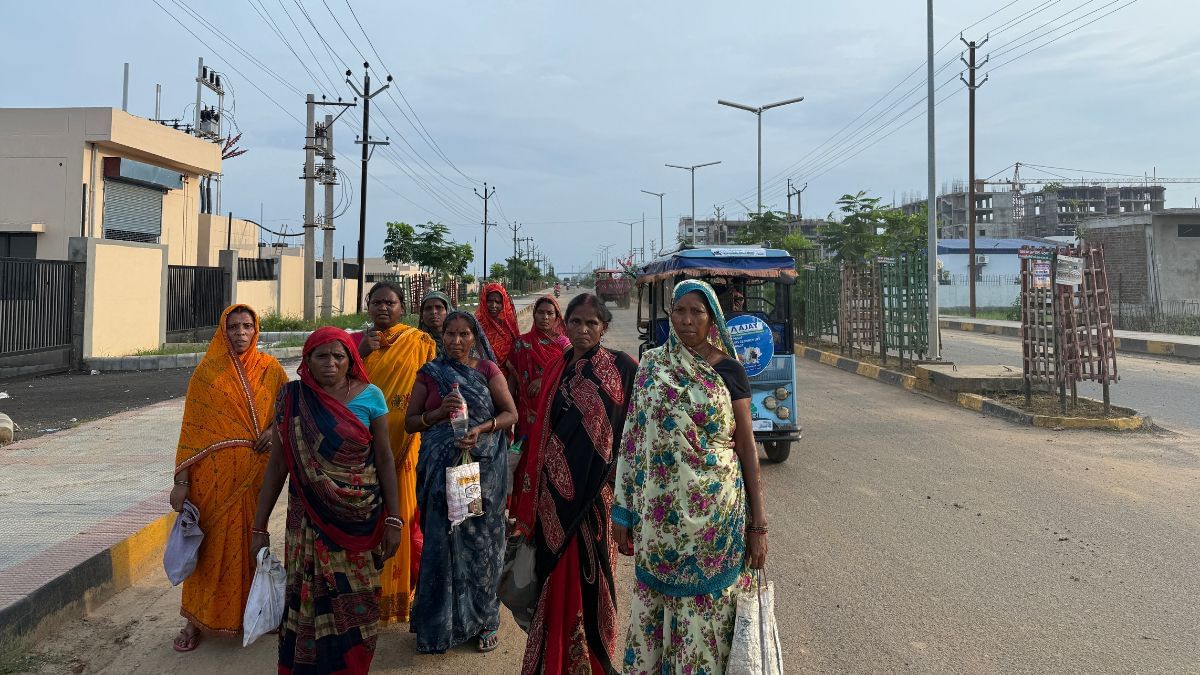
For decades, Bihar has been left behind by India’s growth story. Its per-capita GSDP was just ₹66,828 in 2023–24—barely a third of the national average—showing how the state missed much of the boom that transformed other parts of the country. As of 2022-2023, only 5.7% of its workforce was in manufacturing, far too little for a state with such a young population.
For India’s next leg up, Bihar must close the vision and execution gap that has long kept its factories and people on the margins. Its neighbour, Uttar Pradesh, has chased scale with headline investment intent—about ₹33.5 lakh crore in MoUs at its 2023 investors’ summit—but Bihar has been slower to shake off its reputation as an industrial laggard.
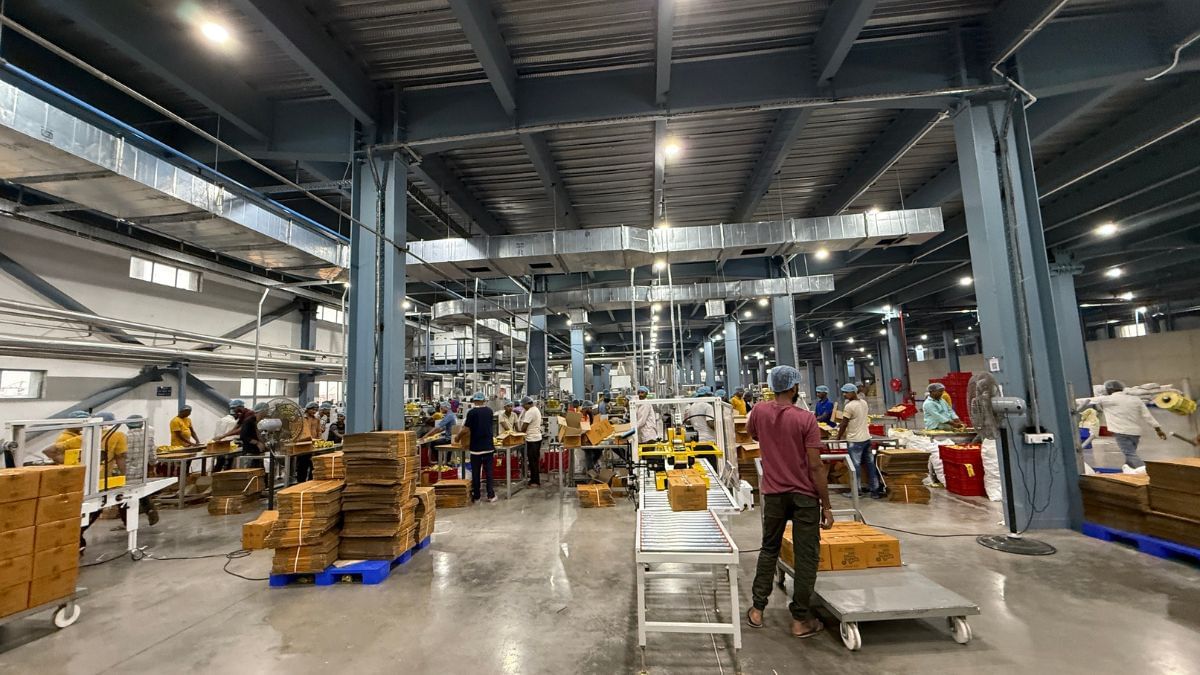
What holds Bihar back is not just weak infrastructure, but a politics that has long been parochial and short on vision. With elections approaching, jobs and industry have once again become campaign buzzwords, but though familiar, this time the promises don’t seem altogether hollow.
Post-pandemic, the state has turned its gaze firmly toward rural industrialisation, tweaking policies, doubling incentives, and hosting its own business summits to woo investors. Shedding its bimaru image, Bihar now wants to be seen as the next hotbed of manufacturing. The Sikandarpur Industrial Area stands as both experiment and emblem of the state’s ambition.
Inaugurated in 2023 by Chief Minister Nitish Kumar, the 300-acre cluster is already close to capacity, with just ten percent of land still vacant. Barely half an hour from Patna, its 21 plots have been allotted to investors at subsidised rates, where they have built factories from scratch. Alongside these stand 15 plug-and-play sheds—ready-to-use spaces where machines were installed and production began almost at once.
This account of revamped infrastructure, however, tells only half the story.
Between 2016 and 2020, 1,238 factories received Phase One clearance in the state, attracting ₹16,832 crore in investment, according to Bihar’s Department of Industries. Since 2020, that figure has leapt to 2,154 factories, with investment ballooning to ₹90,503 crore, a staggering 434.5% increase.
In just two years, Bihar’s exports nearly doubled, from ₹11,191 crore in 2020–21 to ₹20,895 crore in 2022–23. Employment, too, has surged, climbing from 6,418 jobs in 2020 to 35,398 in 2025.
It isn’t just Sikandarpur, but pockets across Bihar are beginning to take off. Today, the state manufactures everything from VIP trolleys to American Tourister backpacks. It is also preparing to produce other global brands: Zara and Van Heusen to Ralph Lauren and US Polo products (through RK Industries), and Decathlon gear (via ATPL in Muzaffarpur).
South India’s garment export giants—RK Industries from Chennai, ATPL from Madurai, and SAPL from Bangalore—are betting big on Bihar. From Coca-Cola and Campa Cola to Britannia biscuits and instant noodles, the range of industrial output has grown rapidly.
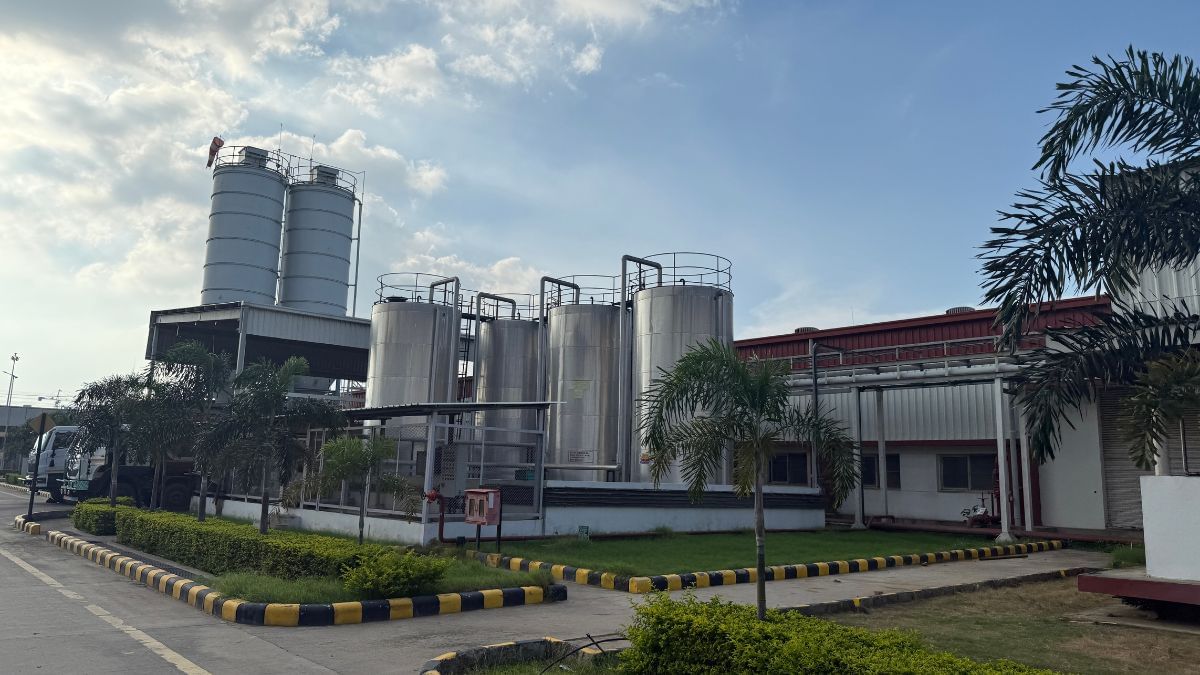
In 2024, HCL launched its first global delivery centre in Patna, opening the door to IT services from Bihar. Reliance has also begun setting up a ₹124 crore Compressed Biogas (CBG) plant in Madhubani, spread across 26 acres.
“This is Bihar’s financial awakening,” said Nitish Mishra, a four-time BJP MLA who took charge as Industries Minister in March 2024, succeeding RJD’s Sameer Kumar Mahaseth. “We missed the 1990s. We can’t afford to miss the next five years.”
Also read: Bihar is seeing a stock market revolution. Patna to Ara, people moving from FD to futures
Factories rise where faith once faltered
In 2012, Mumbai-based businessman Tushar Jain came to Bihar for the first time. Co-founder of High Spirit Commercial Ventures Private Limited, a bag manufacturing company, Jain was scouting land for a new factory. The site was identified quickly, and by 2014, construction had begun. But two years later, the work stalled. The building remained—half-built, half-abandoned.
Its fate seemed to mirror Bihar’s own image: a state where little ever worked. From migration and landlocked geography to lawlessness, the bottlenecks were endless.
Then came COVID. The pandemic waves sent 2.5 million migrants back home, among them nearly ninety percent of the workers from Jain’s own Mumbai factory.
Their return sparked a new possibility.
“I started working on ways to be closer to their homes,” said Jain.
It was in this climate of urgency and opportunity that Jain returned to Bihar in 2023. This time, he chose Muzaffarpur, home to much of his workforce. There, a post-pandemic experiment was slowly taking shape: the Muzaffarpur Bag Cluster, now India’s largest, producing more than 1.5 lakh bags each month.
What strengthened Jain’s resolve was a call from Bihar’s Department of Industries, which invited him to rethink his business in the state.
The department had just come under new leadership. Sandeep Poundrik, a 1993-batch IAS officer, had taken over as Additional Chief Secretary.
“Our goal is to generate employment and stop migration,” Poundrik told ThePrint in 2023, a year after taking charge.
He laid out a blueprint for reform—single-window clearances, plug-and-play infrastructure, and the lowest industrial rental rates in the country, at just ₹4 per square foot. Poundrik and his team travelled across India and abroad, pitching to investors while preparing to host the state’s first-ever Bihar Business Connect by the end of that year.
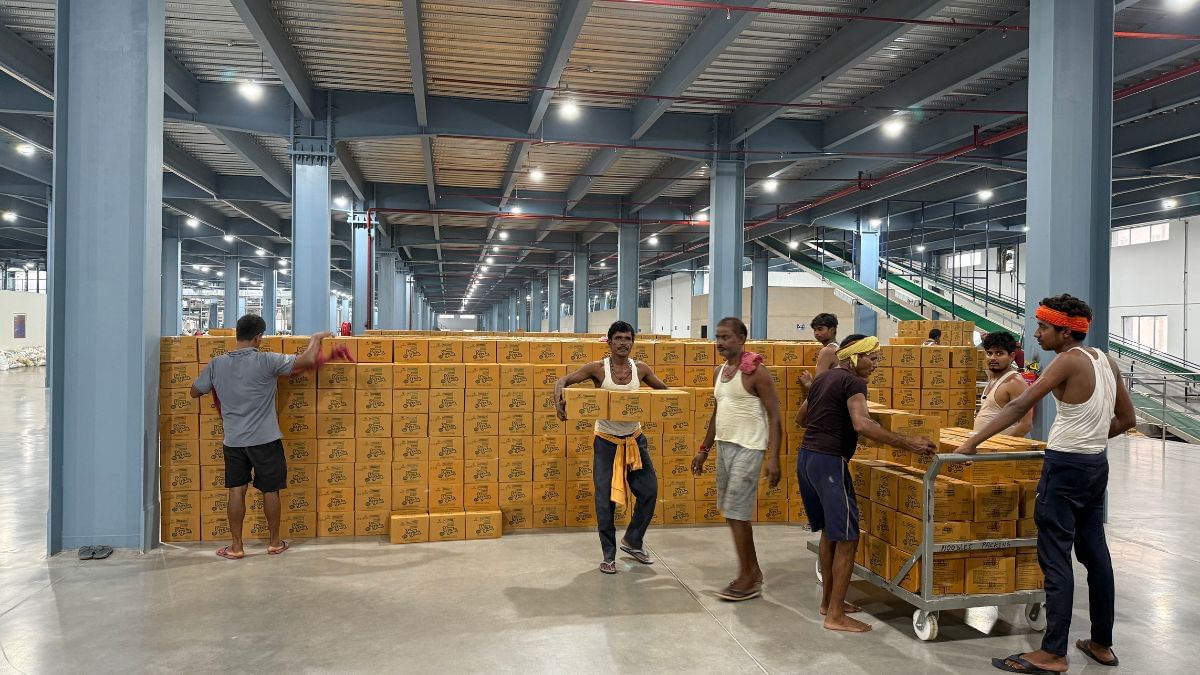
“We want to appear on every radar that matters to business leaders. Bihar has the potential to become a leading state, especially in labour-intensive manufacturing like textiles and food processing,” Poundrik said, voicing his confidence in Bihar’s rise.
At the same time, Industries Minister Syed Shahnawaz Hussain used his media reach to launch an aggressive campaign. Billboards and full-page newspaper advertisements blared the slogan “Bihar hai taiyar” (Bihar is ready). The blitz helped create a buzz and stir curiosity.
Momentum peaked in December 2023, when the Bihar Business Connect was held, drawing commitments of ₹50,530 crore from 300 companies.
Neighbouring Uttar Pradesh, by contrast, had gone much bigger that year, notching ₹33.5 lakh crore in MoUs at its investor meet. Still, Poundrik had set a ball rolling, one that kept gathering pace even after he left to become Union Steel Secretary in August 2024.
By the following December, for the second edition of the global investors’ summit, industrialists were no longer flying to Delhi but to Patna’s Hotel Maurya.
When the final handshakes were done in the grand hall, Bihar had signed MoUs worth approximately ₹1.8 lakh crore. When Bandana Preyashi, Secretary, Department of Industries, later declared Bihar’s exact tally ₹1,80,899 crore—the 13-digit number drew gasps in the room.
The ripples of that summit spread quickly into glossy coffee-table books at airport lounges, and into dinner-table conversations where some of the country’s investors gathered.
Also read: New British boarding schools are here. The latest accessory for India’s rich
Backbone of Bihar’s industrial push
For decades, the image of a Bihar village was shaped by absence: men migrated to industrial hubs like Surat or Ludhiana, returning home only for festivals, while women, children, and the elderly stayed behind.
“Of all the things the pandemic ravaged, it did some good to Bihar,” said Nitish Mishra. “The state and its industrialists found themselves staring at a mammoth force—the returning migrants and the women in the villages.”
In Muzaffarpur’s bag cluster alone, nearly one lakh women work within a ten-kilometre radius. Across Bihar, Jeevika, the state’s flagship women’s collective, now counts over 1.40 crore members. Together, they have become the backbone of Bihar’s industrial outreach, powering a dramatic rise in female labour force participation—from 4.1% in 2017–18 to 30.5% in 2023–24.
At Sikandarpur’s RK Industries, where shirts are stitched for export to the U.S., most of the 600-strong workforce are women. Rinku Kumari, 28, works here alongside her husband Rajkumar Ram, 30, who for seven years stitched garments in Noida for ₹537 a day. He now earns the same wage 15 km from home, returning each evening to his three children.
“If this factory had come earlier, I wouldn’t have gone to Noida at all,” Ram said.
At a nearby sewing machine sits Seema Devi, 42, a member of Jeevika who stitched clothes at home until April. Today, she earns ₹11,500 a month, investing half in her children’s education. “This is something I am proud of,” Seema said, adding that her family’s quality of her family has begun to improve, and that she hopes to continue working.
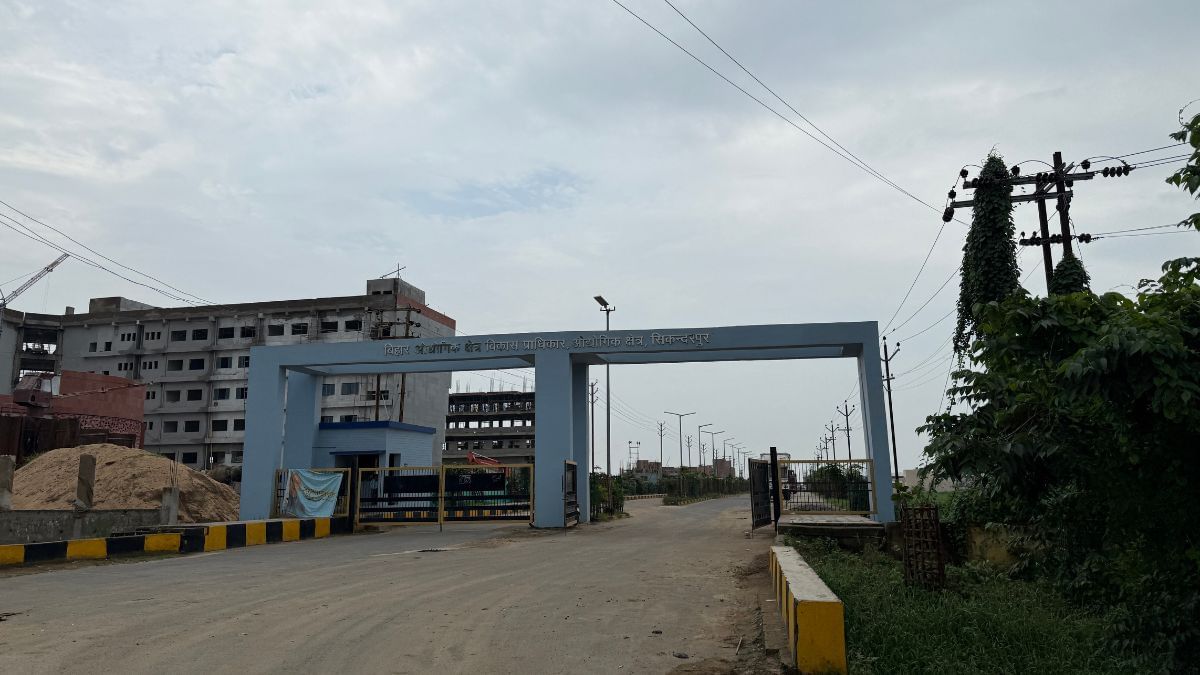
Women like her have become pivotal to Bihar’s textile, assembling, and recycling industries, valued for the consistency and commitment they bring to the factory floor.
“Men are mobile. They experiment and relocate. Women’s hands are preferred in textile,” said Panneerselvam, the unit’s manager, noting that nearly eighty percent of his workforce is female.
Also read: Patna is now a city of museums. Making its history great again
Return of the reluctant managers
Panneerselvam himself was brought to Bihar in 2024 by Ajay Agarwal, the CEO of RK Industries. With two decades of experience in the beverage industry, he took some convincing before agreeing to relocate and oversee operations in the state.
A similar persuasion was required in Kolkata. Gopal Agarwal, a director of Sobisco Foods Private Limited—better known as Sona biscuits—turned to veteran manager Somen Majhi to head the company’s Bihar chapter.
Majhi’s earliest memory of the state dated back to 2001, when, as a young LG professional, he was sent here on a brief deputation. “We had tied up with Mohammad Shahabuddin’s electronics company for assembling. But I was so terrified, I cut my 15-day posting down to four, took the next morning’s flight, and vowed never to return,” he shared.
“In the evenings, nobody stepped outside,” Majhi said. Kidnappings for ransom had become a cottage industry at the time, and the fear was palpable.
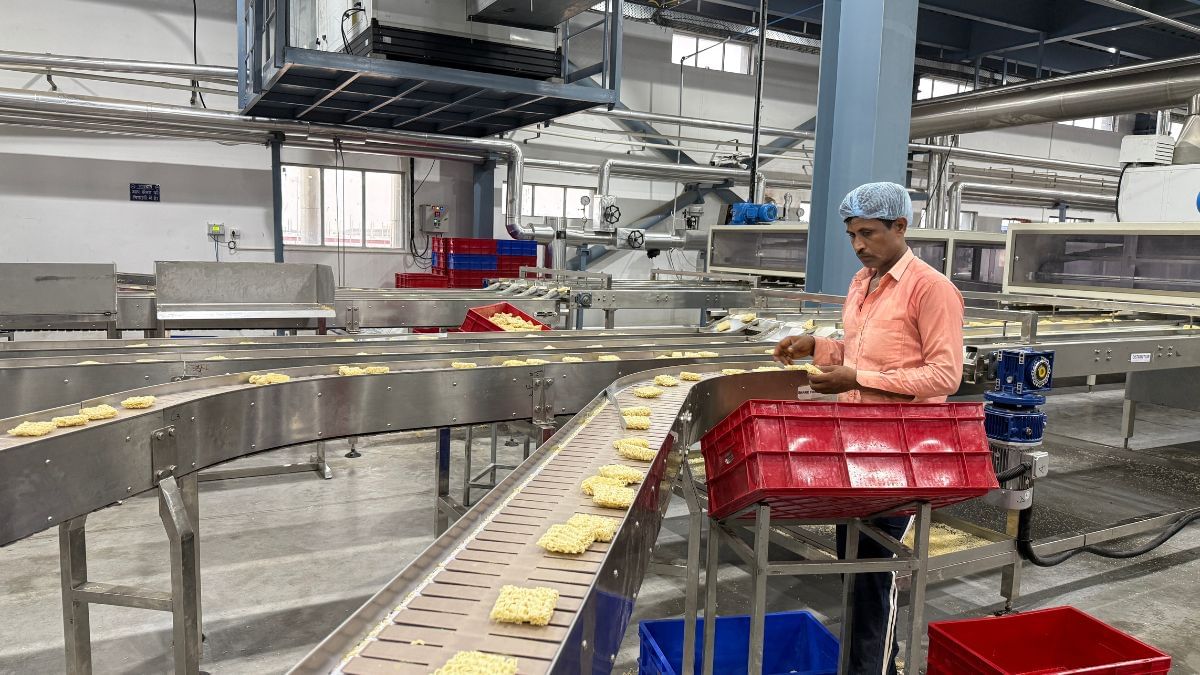
So when, in 2024, Gopal Agarwal invited him to take up the post of General Manager, overseeing an investment of ₹158 crore, Majhi hesitated. He was then asked to at least visit the state once. He did, and soon enough, agreed to stay. Today he lives in Danapur, with his son enrolled in a prestigious school.
“The state has drastically changed,” said Majhi, who now manages Sobisco’s noodles, biscuits, and cookies operations employing 700 people.
For Panneerselvam, too, the shift has been undeniable. Perception, he acknowledged, had long been a major bottleneck. It was hard to convince professionals to relocate to a place where few once wanted to stay.
Also read: Who is really running Nagpur & Mumbai? Influencers, proxy corporators, not civic council
The roads are smoother; the lights stay on
Not long ago, the journey from Madhubani’s Jhanjharpur to Patna was an ordeal—a full day’s travel that often required an overnight stay, even for Nitish Mishra, the constituency’s representative in the Assembly.
“Now I can meet my people in the morning and be back in Patna by evening. The roads have changed,” Mishra said.
The anecdote is backed by data. Under the Nitish Kumar government, Bihar’s road network has expanded at an unprecedented pace.
In recent years, the state has launched a series of highways and expressways linking Raxaul to Haldia, Gorakhpur to Siliguri, Patna to Purnea, and Buxar to Bhagalpur. Together, these routes have stitched the state into the national grid, tying highways to state and district roads.
The result: Bihar now has the third-highest road density in India, at 3,166.9 kilometres per thousand square kilometres.
“Today, it takes just five hours to reach Patna from anywhere in the state,” Mishra added. “Our aim is to bring it down to four.”
For businessmen like Tushar Jain, the new network of roads is a welcome bonus. When he shifted operations, one of his biggest clients—retail giant D-Mart—was sceptical, so he hosted four of its top officials in early 2025.
The new Patna airport impressed them, and the drive to Muzaffarpur took just two and a half hours instead of six. Along the way they admired the Patna Marine Drive, bridges, and even stopped for selfies. “They kept asking how come this side of Bihar was never known to them?” Jain said. The trip ended on a satisfied note.
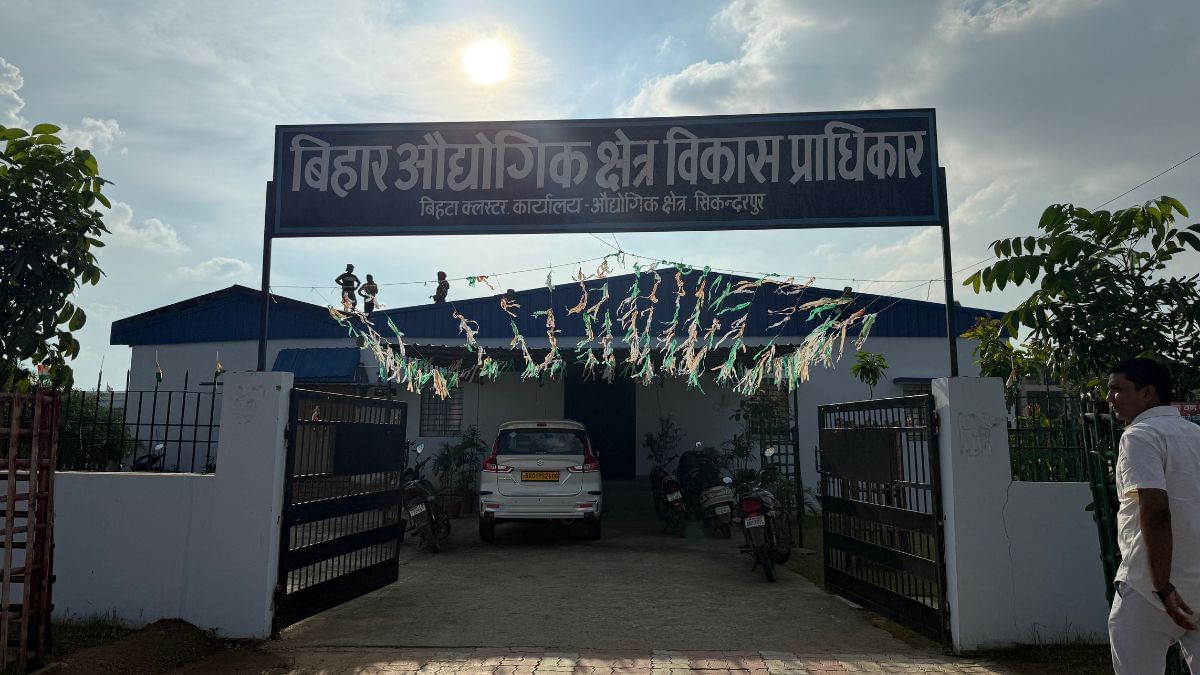
Jain today runs units in Muzaffarpur, East Champaran, and Fatuha (the once half-abandoned site), and is now setting up his fourth in Madhubani. His business has grown to an annual turnover of ₹500 crore.
When India’s “Retail King”, D-Mart founder Radhakishan Damani, asked Jain why he had started to work in Bihar, Jain’s answer was simple: “Less competition, no trade unions, ample water, lower costs, and a red-carpet policy by the state.”
Whether or not Damani was convinced, Nitish Mishra saw the interest itself as a breakthrough. “We had never reached this stage before,” he said.
If airports and highways are changing how Bihar is seen, electricity has transformed how it works. In 2005, the state had just 17 lakh consumers; today, that number stands at 2.16 crore. Average daily power supply has leapt from seven or eight hours to round-the-clock service. Peak demand now touches 8,752 megawatts, compared to barely 700 in 2005.
This newfound reliability has not gone unnoticed by investors. Among the business leaders who filled Patna’s Hotel Maurya during Bihar Business Connect 2024, the Adani Group made one of the bigger commitments: ₹27,900 crore across energy, logistics, infrastructure, and other sectors.
“We have committed ₹29,750 crore to set up a greenfield 2,400 MW ultra-supercritical power plant in Bhagalpur, which will be India’s largest thermal power project to come up in over a decade,” said S.B. Khyalia, CEO of Adani Power.
The group has already invested around ₹850 crore in logistics, gas distribution, and agri-logistics. It now plans cumulative investments worth over ₹40,000 crore in the next eight to ten years. “Bihar is positioning itself as the gateway to Eastern India, with strategic advantages in location, labour costs, and a vast domestic market,” Khyalia added, explaining why the state is suddenly on the radar of one of India’s largest corporations.
Also read: Leopards & snakes in Gurugram, Ghaziabad? Two NCR wildlife superheroes on speed dial
Blueprint behind Bihar’s comeback
As part of its industrial push, Bihar this year rolled out the BIADA Amnesty Policy to reopen shuttered factories and give local entrepreneurs the means to revive dormant infrastructure. Land has also been brought into focus: BIADA, the Bihar Industrial Area Development Authority, is expanding its land bank from 7,000 acres to 27,000 acres.
Last month, the Bihar Industrial Investors Promotion Policy Package 2025 was passed by the state’s Cabinet. Under it, capital incentives are set to rise sharply, with GST reimbursements, stamp duty waivers, and land subsidies expected to double, possibly even triple.
This momentum traces back to the Bihar Industrial Investment Promotion Policy of 2016, which was approved within a year of Nitish Kumar assuming office. Earlier attempts in 2006 and 2011 had failed to make a dent with big players bypassing the state, despite its abundance of labour, water, and farm produce.
The 2016 policy changed that calculus, offering a raft of subventions: capital subsidies of up to ₹20 crore, 100% reimbursement on electricity duty, stamp duty, land conversion fees, and state GST. Employment incentives were also particularly generous, with a 50% wage subsidy for men and 100% for women, SC-ST, and other special-category workers.
As a result, the state saw some growth, but not the radical leap it had hoped for.
In response, the Industries Department began tailoring sector-specific policies: the Textile and Leather Policy (2022) to revive traditional strengths, the Export Promotion Policy (2024) to open global corridors, and the IT Policy (2024) to position Bihar within the digital economy. Bihar was also the first Indian state to introduce an ethanol policy: today, 13 ethanol plants are operational, with four more approved.
Alongside its push for outside investment, the state turned inward with the Mukhyamantri Udyami Yojana, disbursing ₹2,980 crore to local entrepreneurs. For socially and economically marginalised communities—SCs, STs, and EBCs—the Laghu Udyami Yojana followed, reaching over 40,000 beneficiaries with ₹300 crore in support.
“Since we can’t export through sea, we’re building an inland container depot complete with customs offices, warehousing, customs clearance, cargo tracking, and multi-modal transport, Mishra said. “There is also an air cargo service on the way,”
This investment strategy aligns with the Union government’s push in the Northeast, which has enjoyed steady budgetary support in recent years. Bihar’s proximity to the region—and its border with Nepal—gives it a natural advantage in securing this extended backing.
“Finally, we have gotten two SEZs approved, one in Kumarbagh (West Champaran) and the other in Nawanagar (Buxar),” Mishra added.
Also read: Small towns are new front in India’s cancer fight. Max & AIIMS doctors in Amroha to Panipat
From scepticism to cautious faith
It took some conviction on the part of Union Textile Minister Giriraj Singh to persuade investors in September 2024 that Bihar, too, means business. Among those in the audience was Ajay Agarwal, CEO of RK Industries, who had long thought of Bihar as slow and underdeveloped.
That day, however, he chose to put his faith in the state.
“It’s the only state offering plug-and-play sheds. Other incentives, such as capital investment or wage subsidies, are there in other states too; only the amounts vary,” Agarwal said. Within six months, and after just a handful of visits, he had set up operations in Bihar.
“The enthusiasm shown by Bihar’s bureaucracy is what’s missing in other states,” he noted.
Like many investors, Agarwal is also cautious. As election campaigns gather pace in the poll-bound state, the questions lingers: will this momentum endure, or will it slip back into old patterns?
“If they can sustain the pace, their model will work,” said Agarwal, convinced that Bihar had cracked the textile code.
That optimism is echoed by Sandeep Poundrik, one of the architects of Bihar’s industrial vision. “It’s good to see Bihar emerging as an investment destination,” he said, “but it will need continuous handholding and sustained ease of doing business in the years to come.”
According to experts, Bihar was long being held back by poor perception and a lack of political will. Now, with policies in place, improved roads, reliable power, and a willing bureaucracy, the state is staking to claim a seat at the national investments table.
“Businessmen look for the overall environment,” said K.P.S. Keshri, President of the Bihar Industries Association (BIA), an 80-year-old body with more than 1,500 members. “The state must avoid slipping back into the symptoms of a bimaru state, a perception that is extremely difficult to shed.” Law and order, he stressed, will be crucial in the years ahead.
Also read: Chennai station is packed with migrant workers returning to UP, Bihar from Tiruppur
Momentum without a mascot
Bihta, on the outskirts of Patna, was once pitched as Bihar’s Gurugram. In the early 2010s, Vijay Mallya arrived with plans for a distillery, and OP Munjal of Hero Cycles followed with interest. By 2011, brewing giants like United Breweries, Carlsberg, and Cobra Beer were in advanced stages of setting up units.
The pitch was familiar: abundant labour, raw material, and a steadily improving law-and-order situation. Bihta was to be India’s next brewery hub. But in 2013, with the enactment of the new Land Acquisition Act (LARR), farmers demanded quadruple compensation, and projects stalled.
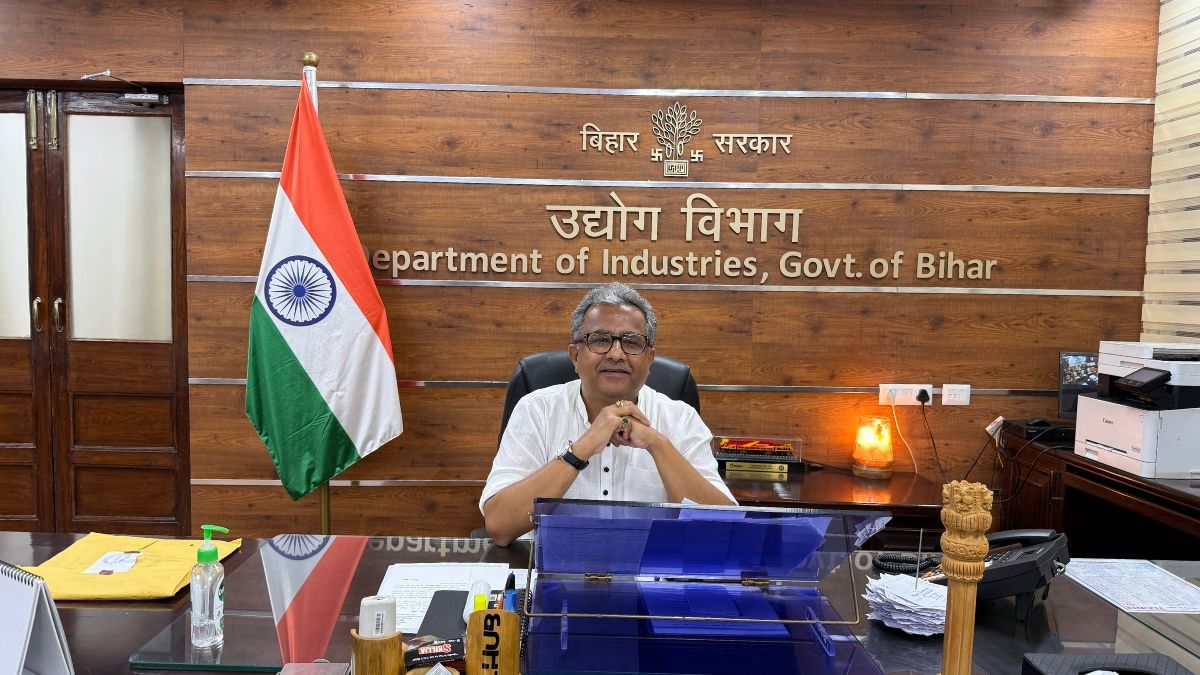
Insiders say Nitish Kumar’s disillusionment with industrial revival began then. In 2016, in a dramatic shift, the pro-investment Chief Minister imposed an absolute liquor ban. Much of the progress in Bihta was undone.
A business leader, who once shared the stage with Kumar during the hopeful days of the early 2010s, recalled him saying, “The elites of Mumbai, the corporate office types, come to these meets on the state’s expense, sit, clap, and leave. They never stay to build factories.”
Unlike other chief ministers in the East—Mamata Banerjee in West Bengal, Raghubar Das in Jharkhand—who courted business leaders personally, Kumar kept his distance. Even after 2022, as momentum returned, his doubts seemed to have lingered.
His absence from recent business summits has not gone unnoticed. Officials admit it is difficult to arrange direct meetings between him and investors.
“He’s seen this before,” said the business leader who spoke to ThePrint on the condition of anonymity. “But what he doesn’t know is that Bihar’s time has come. He will be long gone when the fruits of new infrastructure, electricity, and roads are finally ready to be used.”
The article is part of a series called ‘Changing Bihar‘.
(Edited by Shreevatsa Nevatia)



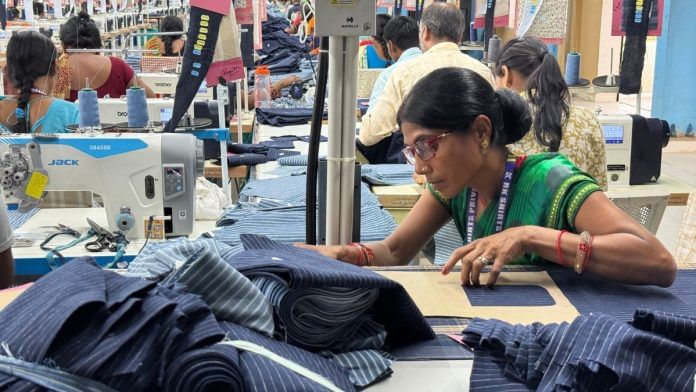



Seems more like a Paid job